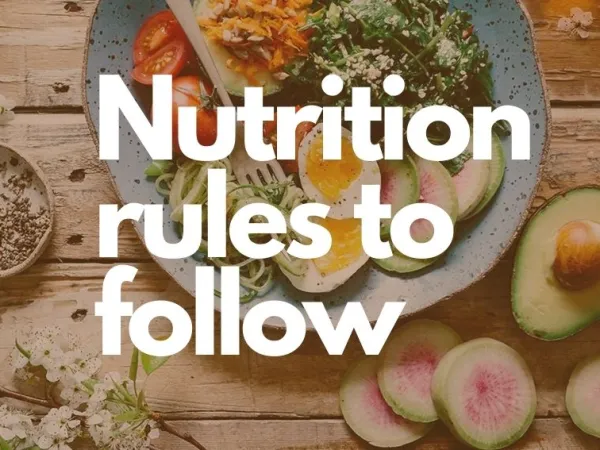I am sure you have felt that mid-day energy dip at least once in your life. That moment throughout the day when you realize that you have been up for 8 hours already, you have a couple more hours of work to get done, you might want to get a workout in afterwards and the thought alone makes you even more tired. It’s the time where another shot of espresso seems more tempting by the minute, you get what I am talking about right? I don’t even drink coffee and I understand that temptation.
Besides more hours of quality sleep there are different ways you can avoid those situations on a daily basis, one of them is nutrition. But don’t all foods provide us with energy? Yes, to a certain extent, but some energy sources can create those ”energy crashes” later on.
So, what is what? What foods give us energy? what foods cause energy dips/crash? Let’s get into that.
Foods that provide energy
As we talked about earlier, most foods provide us with the nutrients our bodies transform into energy later on. With the exception of pure protein sources. Since protein is not a direct source of fuel, we’ll take this out of the conversation for now. This eliminates the rare ”pure protein” sources like chicken and lean lamb from out list.
The food sources that provide us with long-term and sustainable energy are foods that are low on the glycemic index (GI) list. The GI index shows us how big of an impact a food has on our blood sugar level. Your blood sugar level is important in this story because it’s where the energy peaks and crashes come from. Your blood sugar level gets impacted mainly by eating simple and complex carbohydrates. The more sugar/ simple carbs a food consists of the higher it is on the GI list.


This is the first reason why foods that are rich in fat tend to provide us with long-term and sustainable energy, because it doesn’t impact the blood sugar level.
The second reason would be because fat burns slow and steady. Let’s take a candle and a campfire as the example here. The candle has a little flame but will continue to burn for hours, maybe even days, whereas the campfire will provide a much bigger flame and heat source but it will also die down faster. In turn this means you have to keep on fueling it to make sure it doesn’t burn out. In this example the candle represents the foods that are rich in fat and the campfire represents foods with a higher carbohydrate content.
If you’re looking for quick and ready-to-go energy, carbohydrates are the body’ prefered fuel source.

Not all carbohydrates are created equally. Some provide us with much faster and ready-to-go energy than others. This is mainly caused by the amount of sugar/ simple carbs a food consists of.
Foods that cause energy dips
It’s not just specific nutrients and foods that cause energy dips. Sometimes it’s simply a matter of eating large amounts of food that cause these dips. Remember that it takes energy to eat, swallow, digest and store food. The more the body gets in the harder it has to work to keep up with everything coming in and place every nutrient where it belongs.
Other than that, the main cause of energy dips is the carbohydrates we take in. By now we understand that not every carbohydrate is created the same way and it doesn’t have the same impact. Remember, foods that are high up on the GI index list have a bigger impact on the blood sugar level than the ones that are lower.
Let’s use the campfire example again, but this time we’re replacing the candle with a big bonfire. Bonfires generally go on for hours without anyone tending to the fire once it is lit. It won’t outlast the candle because the need for fuel is still too big, but it will outlast the smaller campfire. In this example the bonfire represents the nutrient dense and complex carbohydrate sources. (Hopefully) your body gets more complex carbs in (the fuel for the bonfire) than simple carbohydrates (fuel for the campfire) for this very reason. Complex carbs will still have an impact on your blood sugar level but nowhere near as much as simple/sugary carbohydrates.


Simple carbs can be useful for short-term energy boosts, but not when it comes to sustaining energy long-term. The more your blood sugar level spikes up and down, the more energy crashes you will experience throughout the day. A steady blood sugar level equals a steady energy level.
CHECK OUT MORE BLOGS LIKE THIS ONE DOWN BELOW
6 nutrition rules to follow, part 2
Welcome back to part 2 of this series, nutrition rules to follow. Really what this blog should be called is nutrition rules that you COULD follow. There’s already enough people out there that will tell you exactly what you should be doing and how to do it. Instead, I just want to give you the…
6 Nutrition rules to follow, part 1
Welcome back to another blog where we cover the wide topic of nutrition. The reason why I keep coming back to different topics related to nutrition is because the nutrition space is filled with false and misleading information. My goal is to simplify the message and give you honest information. I never want to tell…
5 Steps to getting stronger
Welcome back to this week’s blog where we cover a topic that I am super passionate about and that is getting stronger. Why am I so passionate about it? Because it has never come easy to me. Even since the start of my fitness journey I have always looked at other people in the gym…






Leave a comment